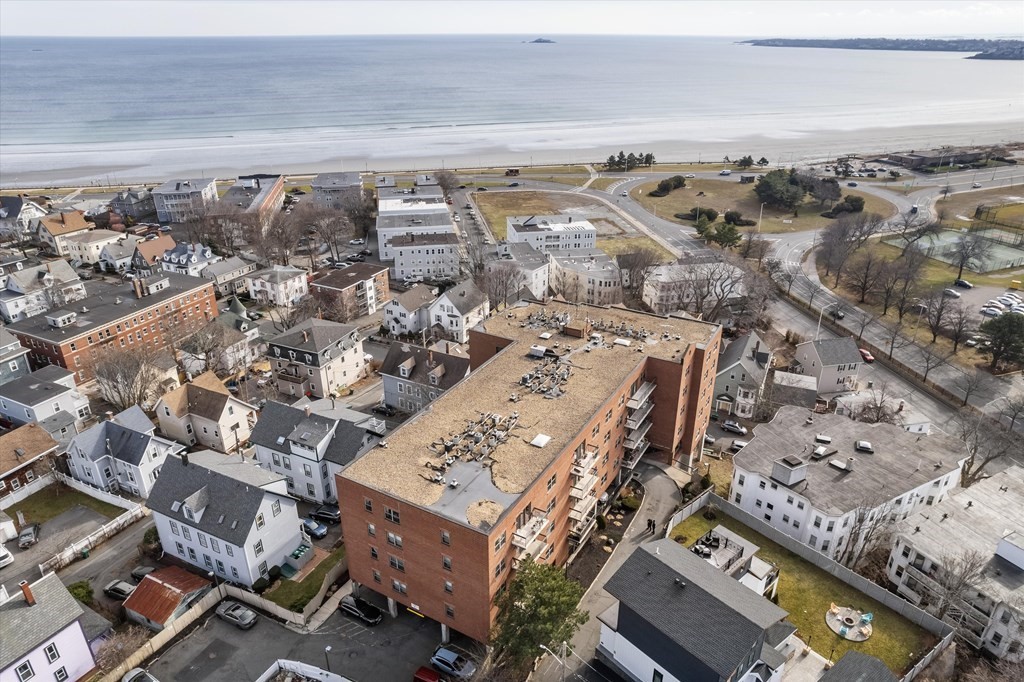Introduction
Replacing the roof of a 40-unit condominium building is a significant undertaking that requires careful planning, coordination, and consideration of multiple factors. The roof is one of the most critical components of any building, protecting residents and their property from the elements. In this blog post, we’ll explore the various aspects and angles that need to be considered when faced with the task of roof replacement for a large condo building.
1. Assessing the Condition of the Existing Roof
Before diving into the roof replacement project, it’s essential to assess the condition of the current roof. This involves:
- Inspection by a Professional: Hiring a certified roofing contractor or structural engineer to inspect the roof and identify the extent of wear, damage, or any underlying issues.
- Roofing Material Evaluation: Determining the type of material used (e.g., asphalt shingles, metal, tile, etc.) and its lifespan.
- Leak History: Reviewing past maintenance records to identify recurring issues, such as leaks or poor drainage, which might inform the choice of new roofing materials.
2. Budgeting and Financial Planning
The financial aspect of a roof replacement can be one of the most challenging parts of the project. Consider the following:
- Cost Estimation: Obtain multiple quotes from reputable roofing contractors to get an accurate estimate of the replacement cost. Include costs for materials, labor, permits, and contingencies.
- Reserve Funds: Evaluate the condo association’s reserve funds and determine whether they are sufficient to cover the project. If not, consider options like special assessments or loans.
- Long-Term Savings: Invest in high-quality materials that may have a higher upfront cost but offer better durability and lower maintenance costs over time.
3. Selecting Roofing Materials
When it comes to roofing materials, making an informed choice is crucial, as it will affect not only the building’s aesthetics but also its longevity, energy efficiency, and maintenance needs. Let’s dive into the most common roofing materials, their pros and cons, and what you should consider for a 40-unit condo building.
Asphalt Shingles
Overview: Asphalt shingles are the most widely used roofing material in North America due to their affordability and ease of installation. They are made from a fiberglass or organic base, coated with asphalt and granules that protect against UV rays.
Pros:
- Cost-Effective: Asphalt shingles are generally the least expensive option, making them a popular choice for budget-conscious projects.
- Variety of Styles and Colors: Available in a wide range of colors and styles, allowing for customization to match the building’s aesthetic.
- Ease of Installation: Simple to install, which can reduce labor costs and project duration.
Cons:
- Shorter Lifespan: Typically, asphalt shingles last 15-30 years, which is shorter than some other materials.
- Vulnerability to Weather: Susceptible to damage from strong winds, hail, and extreme temperatures.
- Environmental Impact: Made from petroleum products and not easily recyclable.
Considerations for a Condo Building: While cost-effective, asphalt shingles may not provide the long-term durability needed for a large condo building. Frequent maintenance or earlier replacement may be required, potentially leading to higher costs over time.
Metal Roofing
Overview: Metal roofing is known for its durability, energy efficiency, and modern appearance. Common metals used include steel, aluminum, copper, and zinc, each offering different benefits.
Pros:
- Longevity: Metal roofs can last 40-70 years, depending on the material and maintenance.
- Durability: Resistant to fire, wind, and impact, making it ideal for areas with harsh weather conditions.
- Energy Efficiency: Reflects solar radiant heat, which can reduce cooling costs by 10-25%.
- Sustainability: Often made from recycled materials and can be fully recycled at the end of its life.
Cons:
- Higher Upfront Cost: More expensive to install than asphalt shingles.
- Noise: Can be noisier during rain or hailstorms unless proper insulation is installed.
- Expansion and Contraction: Metal expands and contracts with temperature changes, which can affect the fastening system over time.
Considerations for a Condo Building: The longevity and low maintenance of metal roofing can justify the higher upfront costs, especially in climates with extreme weather. It’s a good option for condo associations looking for a durable and energy-efficient solution.
Tile Roofing (Clay or Concrete)
Overview: Tile roofing, including both clay and concrete tiles, offers a distinct, upscale look and is known for its durability and fire resistance. It’s a common choice in regions with a Mediterranean or Spanish architectural influence.
Pros:
- Longevity: Tiles can last 50-100 years with proper maintenance.
- Durability: Resistant to fire, rot, and insect damage. Suitable for hot climates as they reflect heat well.
- Aesthetics: Provides a unique and attractive appearance that can enhance property value.
Cons:
- Weight: Very heavy, requiring a strong structural framework. Older buildings may need reinforcement.
- Cost: More expensive than asphalt shingles or metal roofing, both in terms of materials and installation.
- Fragility: While durable, tiles can be brittle and may crack if walked on or struck by heavy debris.
Considerations for a Condo Building: Tile roofing is an excellent choice for aesthetics and longevity but requires careful consideration of the building’s structural capacity. The higher cost may be offset by the long lifespan and minimal maintenance.
Slate Roofing
Overview: Slate is a natural stone material that has been used for roofing for centuries. It’s prized for its beauty, durability, and natural fire resistance.
Pros:
- Extreme Longevity: Slate roofs can last 75-200 years, making them a lifetime investment.
- Natural Aesthetics: Offers a timeless, elegant appearance with a unique texture that improves with age.
- Fire and Weather Resistant: Naturally fireproof and resistant to severe weather conditions.
Cons:
- Very High Cost: Slate is one of the most expensive roofing materials, both in terms of material and installation.
- Weight: Slate is very heavy, requiring substantial structural support.
- Complex Installation: Requires skilled craftsmen for proper installation, which can add to the cost and time of the project.
Considerations for a Condo Building: Slate is ideal for historic or luxury buildings where aesthetics and long-term durability are a priority. The significant upfront investment may be justified by its unmatched lifespan.
Single-Ply Roofing (TPO, EPDM, PVC)
Overview: Single-ply roofing membranes, such as TPO (Thermoplastic Olefin), EPDM (Ethylene Propylene Diene Monomer), and PVC (Polyvinyl Chloride), are commonly used in flat or low-slope roofs, which are typical in large buildings.
Pros:
- Versatility: Suitable for flat and low-slope roofs, which are common in commercial and large residential buildings.
- Energy Efficiency: White membranes like TPO and PVC reflect sunlight, reducing cooling costs.
- Ease of Installation: Relatively quick to install, which can reduce labor costs and project time.
Cons:
- Puncture Risk: While durable, these membranes can be punctured by sharp objects or heavy foot traffic.
- Shorter Lifespan: Typically lasts 20-30 years, depending on the material and installation quality.
- Seam Issues: Improper installation can lead to seam failures, resulting in leaks.
Considerations for a Condo Building: Single-ply roofing is a practical option for flat or low-slope roofs, offering good energy efficiency and ease of installation. However, the association should ensure proper installation and maintenance to prevent leaks and extend the roof’s life.
Green Roofs and Solar Roofing
Overview: Green roofs involve growing vegetation on the roof surface, while solar roofing integrates solar panels to generate electricity. Both options focus on sustainability and energy efficiency.
Pros:
- Environmental Benefits: Green roofs provide insulation, reduce the heat island effect, and manage stormwater runoff. Solar roofing contributes to renewable energy generation.
- Energy Savings: Both options can significantly reduce energy costs by enhancing insulation and generating power.
- Aesthetics and Property Value: Adds a unique aesthetic appeal and can increase property value due to the eco-friendly features.
Cons:
- Higher Initial Costs: Both green and solar roofs have higher installation costs due to the complexity and materials involved.
- Maintenance: Green roofs require ongoing maintenance to care for the vegetation, while solar roofs need regular cleaning and inspections.
- Structural Considerations: Both systems add weight and may require structural reinforcement.
Considerations for a Condo Building: Green and solar roofs are excellent options for environmentally-conscious condo associations. While the initial investment is higher, the long-term energy savings and potential for government incentives can make these options financially viable.
4. Understanding Building Codes and Regulations
Compliance with local building codes and regulations is crucial in a roof replacement project:
- Permits: Determine what permits are required by your local municipality for a roof replacement project.
- Fire and Wind Codes: Ensure the new roof meets the latest fire resistance and wind uplift standards, especially in areas prone to wildfires or hurricanes.
- Energy Codes: Consider the energy efficiency of the roofing material and its compliance with local energy conservation codes.



0 Comments